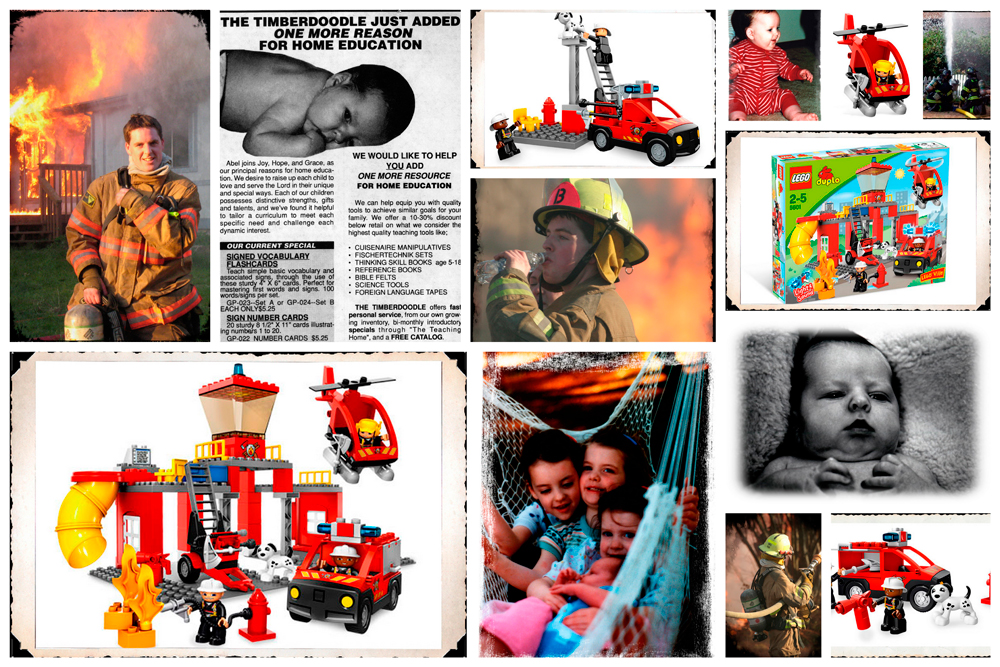Originally posted in a 1992 Timberdoodle Catalog.
If you have been home teaching for any length of time, friends, relatives, and strangers have undoubtedly asked you, “how do you do it all?” Oftentimes, the implication is not only why would you do it all, but can you possibly do it all properly. What is “all”? When we get this question it is referring to housework, schoolwork, and our business.
If you are new to home education, let me share some ideas that have worked for us. In the area of housework, let me share my basic rule of thumb: if I am working and nobody else is, then I have either mismanaged my time or theirs. With Children 11, 10, 8, and 5, there seems to be no reason that I should be working while others are playing.
This month, for example, Joy, 11, is responsible for cleaning both bathrooms, and for setting and clearing the table after each meal. She also deals with the compost, a necessary but very disdainful job. This is an exceedingly easy list of chores for an 11-year-old, so we rotate jobs on a monthly basis. Joy looked forward to this month’s duties.
Hope, 10, is in charge of all the linoleum floors. This means that they are swept at least once a day and the kitchen and entry floors are also scrubbed once a day, usually in the afternoon while everyone else is at the warehouse. Hope is also responsible for maintaining the childrens’ bedrooms. This is often the dreaded job because the bedrooms in our mobile are exceedingly small and it does not take too much activity in them for them to look trashed. Abel’s bedroom right now is doing triple duty, not only as a bedroom, but also as a toy room and a pantry. Organization in there is critical, and will be more so when his room acquires yet another title this winter of nursery! Hope’s final job this month is garbage. In our small mobile, if this is not done on a daily basis, we really know it!
Grace, 8, has kitchen duty this month. Though a relatively simple assignment, it is probably the most time-consuming. It entails cleaning all the dishes, pots, and pans. It also involves cleaning the counters, sinks, and all appliances. She is also depended on to keep all our carpets vacuumed. This is the first time in our married life that we have so much carpeting, so we have made Grace’s job easier by instigating a “no shoes in the house” policy. Therefore, for the most part it is just lint that she is vacuuming and can be maintained with a once a week vacuuming.
Abel, 5, is in charge of laundry. Because of his age and size there are certain limitations, but he can do the bulk of the job. He sorts the laundry, loads the washer, unloads the dryer, and changes the dryer lint trap. Because his head barely reaches over the top of the washer, I empty the clean clothes into the dryer. I also add the soap because I am a little concerned about someone that small lifting something that caustic over his head. Abel also deals with all towels and foldable laundry. He sorts each person’s clothes and couriers them to their rooms. For Dan and myself, he puts away all our folded laundry, but for the girls he just deposits it into a bin in their room for them to sort. He sorts all clothes that need to be hung and he places them in the right room. Because he cannot reach the clothes rods and there is not enough room in our tight mobile for him to haul a chair from room to room, each person is responsible to hang their own hangables.
As you can see, the bulk of the housework is done by the children.The unassigned jobs, like window washing, car cleaning, gardening, and dusting, are distributed as “extra jobs” earned by bad attitudes to regular tasks, by dawdling, or by jobs sloppily done. I suppose it is to our shame that this happens enough that all extra jobs do get done in a timely way. I am in charge of meals, relying on homemade, pre-made meals stored in the freezer. I also undertake the fussier jobs like waxing the floors and removing stains, but for the most part, with regards to housework, I truly lead a life of leisure. So, how do I get housework done? I delegate!










 Twitter
Twitter Facebook
Facebook Youtube
Youtube RSS
RSS GooglePlus
GooglePlus